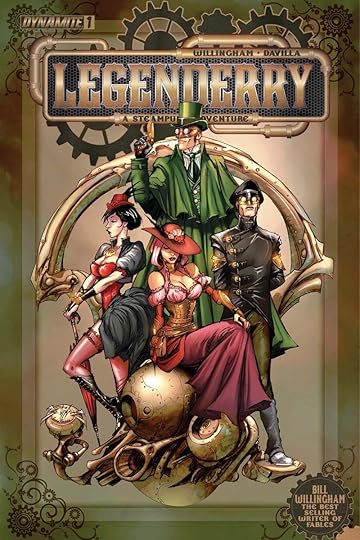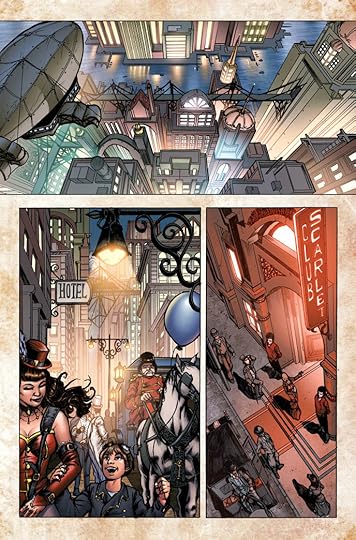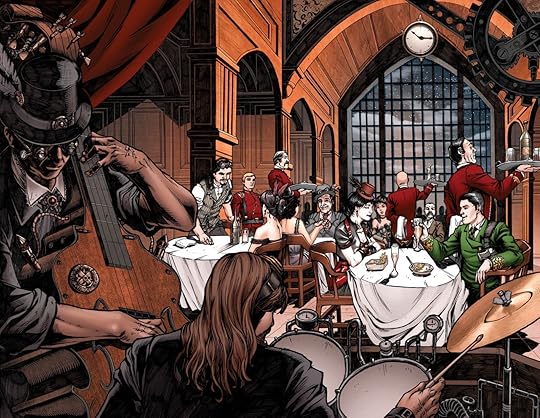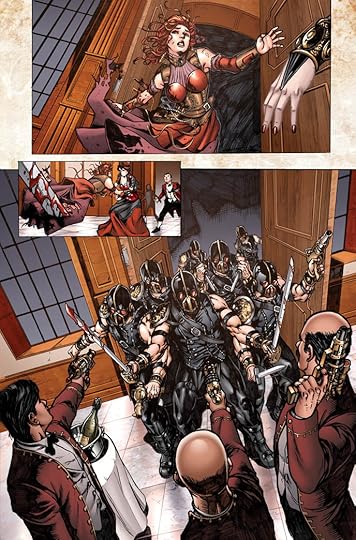Bill Willingham's Blog, page 3
December 15, 2013
On the second day of Christmas…
Today’s 12 Blogs of Christmas episode was going to be called The Ghosts of Christmas Past, and be about some of my past Christmases, with speculation appended on possible larger ideas one might derive from them. But then this happened, so we’ll do that other thing tomorrow:
Peter O’ Toole 1933 – 2013
Peter O’Toole died yesterday. He was 82 and had a good run. It’s almost fitting he should die this close to Christmas, because, though I’ve loved him in many things, he will first and foremost always be The Lion in Winter to me.
The staff of Entertainment Weekly, writing in syndicate, one must suppose, had this to say about him: “…arguably the most strikingly charismatic, most eerily handsome, most preternaturally gifted actor of his acting generation…” I think that’s accurate and not overly stated.
He’ll always be remembered most for his incandescent role as TE Lawrence, in David Lean’s Lawrence of Arabia, and this is appropriate, as much as it’s appropriate to remember any storyteller for a single work. Like the character Lawrence, Peter O’Toole made a conscious choice not to be ordinary. According to Gay Talese in his 1963 Esquire portrait of O’Toole, at 18 the man wrote the following declaration in his notebook: “I do not choose to be a common man…it is my right to be uncommon—if I can…I seek opportunity—not security…I want to take the calculated risk; to dream and to build, to fail and to succeed… to refuse to barter incentive for a dole… I prefer the challenges of life to the guaranteed existence, the thrill of fulfillment to the stale calm of utopias…” I don’t think it can be argued he didn’t live his credo.
But it’s The Lion in Winter that will always stand out for me as the best of his many parts. And since it’s, among so many other things, a Christmas film, and since this is a Christmas Blog, it’s appropriate to spend the lion’s share (pun intended, I suppose) of our time on this particular work.
It’s a wonderful movie, directed by Anthony Harvey and produced by Joseph E Levine. It was written by James Goldman, adapted from his own play. Released in 1968, it’s full of high drama and low comedy, and so well written I ache to be able to form words so simply, but with such dexterity. When I so often talk about my wishes to write about clever, well-spoken people, rather than the stumbling idiots that infest most of our adventure fiction, this film, this story lies at the precise center of my gravity.
In was an expertly cast film, with Anthony Hopkin’s first film role, early appearances by Timothy Dalton and Nigel Terry. And it had Katharine Hepburn, who overpowers most roles she takes, but was pitch perfect in this, ruling every scene she was in – except when Peter O’Toole was on screen. “Larger than life,” is appellation too commonly used, but here it’s the least one can say. O’Toole played it big, mighty in fact, but also sly, and calculating, and then broken in the face of revelations too terrible to receive.
Rumor has it he was drunk during most of the filming.
Here’s some of what co-star Anthony Hopkins had to say about working with Peter O’Toole on the film: “But the one powerful person I’ll never forget is O’Toole, because he was something special. He was unique. Extraordinary. Still is, I think, a real acting genius.”
In another interview, Hopkins was asked specifically about their hard drinking days, adding, “We weren’t close friends but we had a few drinks together. Peter in those days — he could start a fight. There’d always be a bit of trouble around him, like Oliver Reed and people like that. Big drinkers but they were great talents and they burnt the candle at both ends and some of them didn’t make it through.
“They died, like Burton died relatively young, but that’s the way he decided to live. And I think, ‘Good for you, if that’s what you wanted.’ But it changed my life when I did stop. I’m one of the fortunate ones.”
And while his hard drinking would almost kill him, albeit indirectly – his stomach cancer in the 70’s was misdiagnosed as a result of alcoholic excess, and not treated immediately – it didn’t prevent him from giving the greatest of performances, which coincided with his hardest drinking days. I won’t speculate on any cause and effect here.
The Lion in Winter takes place in Christmas of 1183, at King Henry the Second’s (O’Toole) primary residence in Chinon, Anjou, on the European continent. It’s a tale of intrigue amongst his sons, alternately aided and undermined, in wily succession, by their mother, Eleanor of Aquitaine (Hepburn). His sons plot to see which one will be king, after the old lion dies. It’s family politics writ large, complete with meddling neighbors, but relatable to anyone who’s ever had to travel home for Christmas and relearn how to navigate the jungle intricacies of family affairs and statecraft.
It’s one of my favorite Christmas stories, where Christmas is used as a bludgeon, just one of many weapons employed in an extended backroom brawl of medieval royalty. It shows all of human vanity, spite and cynicism, without itself being a cynical story. I won’t spoil. I won’t tell you why (because perhaps I still don’t know), but it’s actually uplifting. Maybe it’s because, if Henry can eventually forgive these reptiles he’s spawned, then we can find the will to forgive our own this Christmas. Who can say?
It’s worth watching, which I will do once again, later this evening.
And, by all gods, above and below, it’s got Peter O’Toole in it, at the absolute pinnacle of his powers.
He was mighty in his sins and his melancholies, dead drunk through many of his better performances. He had a double phallic for a name and seemed to want to earn that questionable distinction in the way he treated the many women in his life. He wrecked so many cars they took his license away, and wrecked a few lives, license for which no one has ever found a way to confiscate. But, in return, he gave us Lawrence and Alan Swann. He gave us Mr. Chips and the enigmatic director in The Stunt Man. He gave us the one Henry II who condemned Beckett to death, and then gave us the same character again, in the autumn of his years, a true Lion in Winter.
Goodbye Mr. O’Toole. I appreciated you much in life, and will miss you.
Merry Christmas.
On the Second Day of Christmas…
Today’s 12 Blogs of Christmas episode was going to be called The Ghosts of Christmas Past, and be about some of my past Christmases, with speculation appended on possible larger ideas one might derive from them. But then this happened, so we’ll do that other thing tomorrow:
Peter O’ Toole 1933 – 2013
Peter O’Toole died yesterday. He was 82 and had a good run. It’s almost fitting he should die this close to Christmas, because, though I’ve loved him in many things, he will first and foremost always be The Lion in Winter to me.
The staff of Entertainment Weekly, writing in syndicate, one must suppose, had this to say about him: “…arguably the most strikingly charismatic, most eerily handsome, most preternaturally gifted actor of his acting generation…” I think that’s accurate and not overly stated.
He’ll always be remembered most for his incandescent role as TE Lawrence, in David Lean’s Lawrence of Arabia, and this is appropriate, as much as it’s appropriate to remember any storyteller for a single work. Like the character Lawrence, Peter O’Toole made a conscious choice not to be ordinary. According to Gay Talese in his 1963 Esquire portrait of O’Toole, at 18 the man wrote the following declaration in his notebook: “I do not choose to be a common man…it is my right to be uncommon—if I can…I seek opportunity—not security…I want to take the calculated risk; to dream and to build, to fail and to succeed… to refuse to barter incentive for a dole… I prefer the challenges of life to the guaranteed existence, the thrill of fulfillment to the stale calm of utopias…” I don’t think it can be argued he didn’t live his credo.
But it’s The Lion in Winter that will always stand out for me as the best of his many parts. And since it’s, among so many other things, a Christmas film, and since this is a Christmas Blog, it’s appropriate to spend the lion’s share (pun intended, I suppose) of our time on this particular work.
It’s a wonderful movie, directed by Anthony Harvey and produced by Joseph E Levine. It was written by James Goldman, adapted from his own play. Released in 1968, it’s full of high drama and low comedy, and so well written I ache to be able to form words so simply, but with such dexterity. When I so often talk about my wishes to write about clever, well-spoken people, rather than the stumbling idiots that infest most of our adventure fiction, this film, this story lies at the precise center of my gravity.
In was an expertly cast film, with Anthony Hopkin’s first film role, early appearances by Timothy Dalton and Nigel Terry. And it had Katharine Hepburn, who overpowers most roles she takes, but was pitch perfect in this, ruling every scene she was in – except when Peter O’Toole was on screen. “Larger than life,” is appellation too commonly used, but here it’s the least one can say. O’Toole played it big, mighty in fact, but also sly, and calculating, and then broken in the face of revelations too terrible to receive.
Rumor has it he was drunk during most of the filming.
Here’s some of what co-star Anthony Hopkins had to say about working with Peter O’Toole on the film: “But the one powerful person I’ll never forget is O’Toole, because he was something special. He was unique. Extraordinary. Still is, I think, a real acting genius.”
In another interview, Hopkins was asked specifically about their hard drinking days, adding, “We weren’t close friends but we had a few drinks together. Peter in those days — he could start a fight. There’d always be a bit of trouble around him, like Oliver Reed and people like that. Big drinkers but they were great talents and they burnt the candle at both ends and some of them didn’t make it through.
“They died, like Burton died relatively young, but that’s the way he decided to live. And I think, ‘Good for you, if that’s what you wanted.’ But it changed my life when I did stop. I’m one of the fortunate ones.”
And while his hard drinking would almost kill him, albeit indirectly – his stomach cancer in the 70’s was misdiagnosed as a result of alcoholic excess, and not treated immediately – it didn’t prevent him from giving the greatest of performances, which coincided with his hardest drinking days. I won’t speculate on any cause and effect here.
The Lion in Winter takes place in Christmas of 1183, at King Henry the Second’s (O’Toole) primary residence in Chinon, Anjou, on the European continent. It’s a tale of intrigue amongst his sons, alternately aided and undermined, in wily succession, by their mother, Eleanor of Aquitaine (Hepburn). His sons plot to see which one will be king, after the old lion dies. It’s family politics writ large, complete with meddling neighbors, but relatable to anyone who’s ever had to travel home for Christmas and relearn how to navigate the jungle intricacies of family affairs and statecraft.
It’s one of my favorite Christmas stories, where Christmas is used as a bludgeon, just one of many weapons employed in an extended backroom brawl of medieval royalty. It shows all of human vanity, spite and cynicism, without itself being a cynical story. I won’t spoil. I won’t tell you why (because perhaps I still don’t know), but it’s actually uplifting. Maybe it’s because, if Henry can eventually forgive these reptiles he’s spawned, then we can find the will to forgive our own this Christmas. Who can say?
It’s worth watching, which I will do once again, later this evening.
And, by all gods, above and below, it’s got Peter O’Toole in it, at the absolute pinnacle of his powers.
He was mighty in his sins and his melancholies, dead drunk through many of his better performances. He had a double phallic for a name and seemed to want to earn that questionable distinction in the way he treated the many women in his life. He wrecked so many cars they took his license away, and wrecked a few lives, license for which no one has ever found a way to confiscate. But, in return, he gave us Lawrence and Alan Swann. He gave us Mr. Chips and the enigmatic director in The Stunt Man. He gave us the one Henry II who condemned Beckett to death, and then gave us the same character again, in the autumn of his years, a true Lion in Winter.
Goodbye Mr. O’Toole. I appreciated you much in life, and will miss you.
Merry Christmas.
December 14, 2013
On the first day of Christmas…
Here’s a confession I suspect most of you have figured out long ago: I love Christmas. I love almost everything about it, even the so-called crass commercialism, about which I’ll opine in tomorrow’s essay, tentatively titled, Ghosts of Christmas Past.
Included among those things I love, in the past half-dozen years or so, has been (and is currently) reading Paul Cornell’s annual 12 Blogs of Christmas – a new essay posted onto his site, each of the 12 days leading up to Christmas. Paul, as you may know, is a Brit writer of some renown, and remarkable storytelling ability. In past years, not only have I been reading his 12 Days posts, I’ve had the occasional privilege to participate in them, a thing I’ve much enjoyed doing.
However, this year Paul has gone back to doing it primarily on his own, which is lovely, but which would have left me out in the cold. So, I asked him if I might borrow the idea and do my own 12 Blogs of Christmas this year, not to try to replace, or upstage his efforts, but to simply add to the delightful whole.
He very graciously said, “Yes,” which is why you’re here today, looking at the first of my 12 Blogs of Christmas. In just a few more sentences, we’ll get to my essay for today. Over the following eleven days, we’ll get a few beloved old stories, some new stories (possibly including a new and original Fables prose story), I’ll treat you to a few of my ruminations and opinions about the holiday (all the while trying not to get too preachy or scolding about it – but we’ll see how that works out), some history and some silliness. The last of these blogs will be posted on Christmas Day. Won’t that be nice?
So herewith, without further ado, the first of twelve.
Bill’s Christmas Gift Guide
It’s a widespread tradition to create and disseminate gift-giving guides for this time of year. Many do it for no more sinister reason than they like pointing out some of the clever and engaging treasures they’ve discovered. For stores it’s a handy way to call attention to their own available wares. For writers of comic books and novels, it’s a way to drum up a few extra sales of our published works.
And there’s nothing wrong with that.
I, for example, would never put a story out there I wasn’t proud to have written, and which was created for the specific purpose of finding readers, so why not do what I can to call attention to them? It’s not naked greed at work. At worst it’s tastefully clothed greed, with a generous side dish (Ye Gods. How mixed has this metaphor gotten?) of authentic enthusiasm for the empirical results of my life’s work.
So then, I could fairly and reasonably use this space to talk about one or two (or nine, or twelve) of my own books out there right now, any or all of which would make excellent gifts, and two of which were specifically published just in time to be available for this season of generous giving.
But I think I won’t do that.
Instead, I’ve prepared a Christmas Gift Guide of exactly one item, which you can’t buy online or find in any store.
Some background is needed.
I am a freelancer, and have been for the past thirty years. I’m an independent spinner of stories, for which I have earned an embarrassingly terrible living, at times, and a surprisingly good one, at other times. I happen to be in one of the good times, so don’t worry about me. This note wasn’t intended to tug at your heartstrings. However, there is one joy almost any sort of freelancer can never experience: being off duty.
Don’t get me wrong. I’ve taken time off from work – much more than my share, to hear some frustrated editors talk. I’ve taken full days off, full weeks off, gone on vacations, and indulged in all of the various implementia of structured relaxation. But I’ve never been able to do it without guilt. I’ve never once taken time off without feeling guilty about the story I should be working on, the deadline I should be meeting, and so on. In those lean years, when the occasions of paid writing work were few and far between, one might think it would be easier to take some guilt free time off, but it wasn’t. Then the pressure was to spend more (meaning all) of the time in hustling up new assignments. “Get to work, you lazy bum,” has been the internal soundtrack accompanying each moment of stolen repose. In my unscientific surveys of fellow writers, I’ve concluded this is a universal condition amongst freelancers.
I’ve often envied the true nine-to-fiver. In the entire history of the fast food industry, for example, not a single flipper of burgers has ever gone home and agonized over how he could have done a better job on that one double bacon cheeseburger. No one thinks he should be spending his off hours practicing the flip, over and again, so that he can do better on his next shift. When a burger flipper goes off duty, he’s truly off duty. His non-working time is entirely his own. That might be the only blessing of such a job, but it’s a real one.
I haven’t been truly off duty since my first job, more than forty years ago. I’ve forgotten what it feels like.
Which brings us to reading. It’s just about my favorite thing to do. But any time spent reading is time stolen from working, so the guilt is always there. My favorite fantasy vacation would be a handful of days, with a dozen books stacked up to read, and not an atom of guilt about it.
It’s not possible. Everything else could be arranged, except for the “lack of guilt” part. That’s the nature of my chosen profession, and there’s nothing to be done about it. And that’s okay, because it’s one of the few downsides of a truly lovely life. All is mostly terrific, and so I often count my blessings.
I was pondering this a few weeks ago (or maybe months – my time sense is a fairly protean sort of critter), when a friend asked me what I’d most want for Christmas. That’s when I thought of the “days of guilt-free reading” notion. Since I’ve already explained how such a thing isn’t possible for me, and those like me, let’s move on to the variation on that idea, I came up with later that same day, mostly because I sat there thinking about such things for much too long, rather than hauling my tired old bones up to my writing room and getting to work, as I should have done. The variation of the idea was this:
What about giving someone a day of distraction-free reading?
What a marvelous gift that would be.
Here’s how it works. If you have a live-in loved one, husband, wife, son, daughter, mother or father, or any sort of significant other, and if he or she (would you mind if I just default to ‘she’ as the personal pronoun of choice for the rest of this essay?) is a reader, consider giving her a day of uninterrupted reading. No, you don’t have to find the right book, or books, for her. She’ll handle that part just fine on her own. What you do is create the day in which she has no other responsibilities or distractions, so that she can spend the day reading. That’s your gift to her and, if she is a reader, she’ll love you for it.
If you have children, they’re entirely your responsibility for the day. If homemade meals are required, you do all of the cooking – and cleaning. If take-out will do, you go get it. You turn all of the phones off, except the one you’re going to keep with you and answer on the first ring. When the call is for her, you’ll very kindly and politely mention that she isn’t available today. When the well-meaning friend on the other end of the line insists, “It’s okay, I just need to ask a single thing and it won’t be but a moment’s interruption,” you find a gentle way to put your foot down, because, when one is lost in a good story, a quick interruption is just as bad as a more involved one. Anything that draws her out of the story is not allowed on her reading day.
And here’s the most important rule: You do all of this quietly, without interrupting her yourself. You will have already settled the matters of what she wants to eat, at what times, days before. This isn’t your day. You don’t need to show her all of the terrific things you’re doing to keep things out of her hair today. You can collect your rewards and “thank you” tomorrow.
Personally, as a proud Lazy-American, I like reading in bed. Being quietly served my breakfast in bed, on my reading day, would be a special thing. But then also getting lunch and dinner served in bed? That would be decadent to the point of being glorious. She’ll pick her own spots though. And if she moves into a new part of the home to continue reading, you move out of it.
That’s it. That’s my gift-giving guide for this year, and there’s still plenty of time to give it. Do up a nice handmade card for it and slip it into her stocking, along with the new diamond bracelet and the tickets to Aruba. Best to leave the date for her reading day blank, the subject of later negotiation, what with busy schedules and such. But don’t put it off too long. Homemade gift certificates tend to spoil after a month.
And if she surprises you by giving the same gift to you, that’s just fine. It’s not like you bought each other the exact same Harry Potter DVD, which means you each essentially bought them for yourselves. It’s a different gift entirely, because your day won’t be the same as hers and your book will be whatever one you choose. You’ll be visiting an entirely different world for the day.
For someone who loves to read, this is the best gift I can think of, so consider giving it this year.
Merry Christmas.
December 11, 2013
Agents of S.H.I.E.L.D.
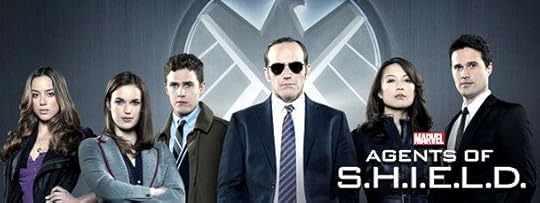
Created by Joss Whedon, Jed Whedon and Maurissa Tancharoen.
Produced by ABC Studios, Marvel Television and Mutant Enemy.
Note: What follows in the paragraphs below isn’t insider knowledge. It’s speculation. And because that’s so, there’s no formal need for a spoiler warning. However since what follows below is informed and thoughtful speculation, and since those who fetishize spoiler warnings tend to get cranky in the absence of them, let’s allow that this can serve nicely as that.
Good? Onward then.
Here’s what you need to know about Agents of SHIELD. It’s the story about the latest, and most advanced to date, version of SHIELD’s LMD program. An LMD, as every funnybook reader who wasn’t born yesterday knows, stands for Life Model Decoy. They’re basically android replicas of real people, whose original purpose was to act as decoys for the human on which they are based. At first they were good for little else, and then only briefly, since their ability to mimic a real living person was rudimentary at best. But SHIELD scientists have been tinkering with them all along, as one does, making incremental advancements for decades.
Agent Phil Coulson (sometimes brilliantly), played by Clark Gregg is an LMD version of the original, who died in action (during the Avengers movie). He’s such an advanced model of an LMD that he has no idea he isn’t actually the real Phil Coulson.
In order to test how well he does function, the leaders of SHIELD have more or less set him loose to pick and choose his own missions. To further to explore his limits, they’ve chosen to complicate the test by saddling him with a number of SHIELD’s oddballs, loners, burnouts and general broken parts, to see how well an LMD can function in the cauldron of field missions, whilst leading a team of misfits. They’ve even thrown a rookie recruit in there, who’s almost entirely unsuited for SHIELD membership, and wouldn’t be allowed within a mile of sensitive SHIELD intel, if it didn’t serve a greater purpose – much in the same way real espionage agencies sometimes allow actual intel to slip into the hands of an enemy power, in order to make them believe something false, buried among the true stuff.
Under the guise of giving him a boatload of leeway, earned because of his past accomplishments and expertise, SHIELD has intentionally made the test as hard on its subject as they could. In fact, they wouldn’t mind too much if this were a test-to-destruction, since that’s the only way to really determine the limits of a new invention.
I’ve heard complaints from some viewers who can’t believe in the premises underlying the story – that a tight-assed espionage/military organization like SHIELD would ever allow a band of misfits to be assembled into a single team, then give them all the best toys, then let them pretty much choose their own missions. Put that way, it does seem an unlikely thing for any (even fictional) government bureaucracy to do. Unless that’s all part of the plan to see what this new Coulson thing can truly do, when largely left to his own devices. Then it makes perfect sense.
As I said above, this is only speculation. I have no access to inside information. This may not be at all what the story’s actually about. They may have assembled a cast of loners and misfits for no better reason than that sort of nonsense is the beloved, time-honored Hollywood cliché, suitable for endless repetition. Look at the endless number of Hollywood style Cops, Fighter Pilots and Military men who’re ceaselessly celebrated and rewarded for how often they don’t obey the rules, can’t fit in, and do everything by the seat of their collective pants. Agents of SHIELD may just be the latest iteration of this rule.
I doubt that though, for two compelling reasons. First, some of the creative personnel involved in this series have shown a past tendency to delve into those hoary old clichés and find new and original ideas to glean from them. Second, if this isn’t the case, then I’m a better writer than that bunch, which I am clearly not.
Therefore my guess must be right. No other possibility. Ipso facto reducto absurdimento! Case proven.
November 29, 2013
Interview: Legenderry Comes To Life
Bill recently chatted with Steve Morris over at The Beat. They discussed Bill’s upcoming series from Dynamite, Legenderry. Check out the interview below or head on over to The Beat to see the original piece.
——————————————-
Coming in January this year, Legenderry: A Steampunk Adventure will see writer Bill Willingham and artist Sergio Fernandez Davila take on a host of Dynamite’s most recognisable characters for a seven-issue re-imagining. Not only will the story have characters as diverse as Green Hornet, Vampirella, The Six Million Dollar Man and Red Sonja all in the same story – the story will be set inside a giant world created by the creative team, based around the steampunk genre.
To find out more about the series, I spoke to Willingham about how the project came about, how he built up this new world for the series, and his plans for the characters going forward.
The Beat: Legenderry: A Steampunk Adventure takes characters from a whole range of genres and contexts and places them within one steampunk world. How did you first come onboard a project like this?
Bill: It’s been a long time since I’ve been in a place where I had enough room in my schedule to work on something new. That time is still not quite upon us, but Nick and I have been itching to work on a book together for Dynamite for years now. I wasn’t able to bring something brand-new and creator owned to the table since there’s a lot of work to put into building a new series from the ground up.
Initially, I wanted to work on a series that borrowed characters that no one else was using at the time to avoid having to deal with continuity and where they all are in their current books. All of the characters that appear in Legenderry are characters that are currently being used, so Nick got a little creative and that’s where the steampulp idea came from – a place where I could create new versions of these characters in my own way that was separate from everything else going on.
The Beat: How do you view the concept of steampunk, personally? Have you written within the style before?
Bill: I have not written within the genre before, but not really for any other reason than I dislike the term “steampunk”. The “steampunk” genre embodies brilliant aspects from the works of HG Wells and Jules Verne who wrote of adventurers, discovery and action. They were not punks. Punks instead fit into the subgenre of cyberpunks because cocky punks are exactly who they were and one of the reasons that I never warmed up to the genre as a whole.
I call the genre steampulp since it more accurately describes the vibe that I’m going for, but I expect that the time to change the name of the genre has long past and my redubbing of it won’t catch on.
The Beat: How much input did you have in the individual design of the characters, and of the general aesthetic of the miniseries itself?
Bill: As much as I wanted. At least that’s the impression I got, but I haven’t yet really had to test the limits, since the character designs and art were so well done from the starting gate that I asked for very few changes. I requested things like, “I’d like to see her hair a bit longer, or his coat a bit longer, or I see Zorro’s sword as being a skosh thinner.” Nothing major.
Also, so far, I’ve never had to ask for a correction of any of the artwork Sergio has done for the actual story. He seems to start at wonderful and adds quality from there.
The Beat: When you take on a story like this, how carefully do you plan out the World which the characters inhabit? How important is it to you that you get the details of the city, and the society, and make sure everything fits together?
Bill: The world building part of any story, especially for a tale set in an entirely invented world, is perhaps the most important part of said story, at least in the planning and pre-planning stages. It’s also the most rewarding part for me. It’s like putting together an intricate 5000 piece jigsaw puzzle, with no picture on the box to guide you. It’s a combination of decision making and then extrapolating all of the possible results of those decisions. I love it. Getting all of the details right is vital. If I can’t make the world, and every important part of it, interesting and detailed and engaging to me, I can’t ask a reader to believe in it.
The Beat: Are there any details in particular which you’re excited to see realized in the story?
Bill: A few. First the look of The Big City (that’s actually its name), where the story starts out. Having the art in for the first two issues, I already see that Sergio has delivered more than my notes and imagination asked for. I got just a glimpse of the skyship Victory at the end of Issue Two and that again delivered wonderfully on my expectations.
We’ve yet to get to Landing, the Miracle Science City, which comes along in issue four (or is it five?), which is the steampunk era view of what the future must look like.
The Beat: Was it tricky to fit certain characters into the same universe? I can’t imagine fitting The Six Million Dollar Man into a Victorian setting would be easy, for example.
Bill: I thought fitting the Six Million Dollar Man into this world would indeed be the greatest challenge of the bunch. He turned out to be the most fun to adapt and is currently my favorite character in this world of the best possible characters.
The Beat: Will you be getting inside the head of any of the characters like Vampirella, Red Sonja, Green Hornet, etc – or will the story be viewing them from a distance?
Bill: Yes. Deeply so in at least one instance. But I’ll divulge no details. Sorry.
The Beat: The story seems to be a large-scale mystery, with pieces being put together each issue. What kicks off the narrative of Legenderry?
Bill: It is a mystery, yes, which is to say, it’s a mystery who the villains are and what they want with the MacGuffin character, the woman who leads us from one of our heroes to the next. But it’s also a chase against time, where the adventure leads us on a tour of the entire world of Legenderry.
The Beat: We’ll be following a young woman as she interacts with various characters in turn throughout the series – do you view her as the guide for the reader? The classic stories associated with steampunk are usually works by people like H.G. Wells, which are all about a guide/adventurer heading off and introducing the reader to all kinds of new ideas and sights.
Bill: I so want to answer this question in detail, but I’ve already said too much about her. She’s not the guide. She’s the treasure everyone seems to be after. But why?
The Beat: Although this is a complete seven-issue storyline, do you think you could ever be tempted back for another story set in this world, at some point in the future?
Bill: Yes. Why create a whole world just for seven issues of anything? I always want to explore further.
November 26, 2013
Who IS The Fairest In All The Land?
Jeffrey Renaud of CBR talked with Bill recently and published the interview. You can check it out by clicking here or by reading it below:
———————————— CBR News: Did you wake up one morning and say, “Today’s the day,” or had you been mulling bringing “Fables” to an end for some time?
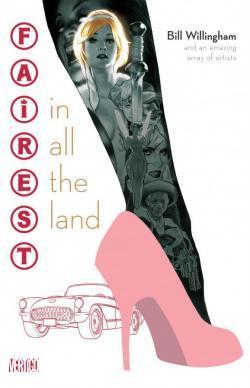 Bill Willingham talks about the new “Fairest in All the Land” OGN and his plans for “Fables’” final stretch
Bill Willingham talks about the new “Fairest in All the Land” OGN and his plans for “Fables’” final stretchBill Willingham: It’s been mulled for a while in the sense that I always have in the back of my head: “If you get the word right now that you’re dying in a month, how do you end it?” There’s always that fictional doctor waiting just off stage to say, “You’ve contracted this rare disease of which there has only been five instances in history and luckily, we have pinned down exactly how many days you have left.” That’s always been in the back of my head.
Willingham Announces “Fables” to End with Issue #150
But the decision to end “Fables” when it will be ended now came mostly as a result of planning this latest, which is now going to be the last, big arc leading up to “Fables” #150. It became a bigger and more dramatic thing to the point where it was just obvious: “Oh, I see now this is the final story. No wonder it’s so big and important.”
Is the ending going to be what you always imagined it to be or did it sneak up on you a bit?
A little bit of both. It contains some of the elements of which I knew, all along, had to go into the ending. There have been a couple of times over the course of “Fables” where I said, “This can be the ending point.” For example, “Fables” #75 when Geppetto signs the Fabletown Compact. That was just an obvious moment. But there is always that pesky little voice that says: “That’s great. What happens next?”
And it’s great that I’m inflicted with that because it’s hard to be in this business and not have a healthy dose of that pushing you. But this time, it was pretty clear that it was it. Did I answer your question? [Laughs]
Yes, you did. Your current arc, “Camelot,” comes to a close in January. Do we head right into the final arc after that?
“Camelot” plants the seeds for the final arc. Between “Camelot” and the yet unnamed big final arc, which I hope will not be named “The Big Final Arc,” is a one-issue Geppetto story and then a two-issue story drawn by Steve Leialoha story called “The Boys in the Band,” which takes care of the other shoe that has to drop to set up the big final arc.
Those three issues take place after “Camelot” and then starting with “Fables” #141, we basically count down to #150, which is going to be an oversized, wrap-everything up issue along with some additional short stories from various artists in addition to the main story arc with all of the main characters. We’re going to try and pick off as many of the supporting cast as possible and tell stories about what is the ultimate fate of each and every character as we say goodbye.
A few years ago at Comic-Con, you released a one-page tale featuring Ambrose Wolf and Ozma that you said hinted at what the second hundred issues of “Fables” would be all about. Will the fates of all of Snow and Bigby’s children be revealed in this final arc?
Yes, the prophecy about the destiny of the cubs figures very much into the big final story. As a matter of fact, just before you called, I wrote a scene that pins down another one of those. We found out about which cubs fit into certain categories but there are still a couple of left to be revealed. But yes, all of their roles told in that particular piece of enigmatic, cryptic nonsense will be revealed.
I love “Fables,” but we were actually scheduled to speak about “Fairest in All the Land” today — which we will get to — but first one more question. In addition to the new original graphic novel, over the years you’ve also released two spinoff ongoing series, several miniseries, graphic novels and a prose novel. Does the end of “Fables” also mean the end to these types of projects or will there be more “Fables” projects beyond “Fables” #150?
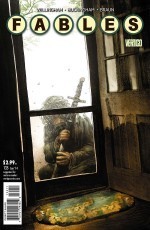
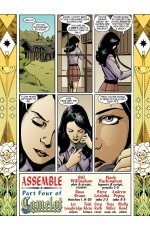
Willingham knew the time to end “Fables” was right as he spent time planning what turned out to be the final arc
I am certain to the core of my being that [Vertigo executive editor] Shelly Bond already has all of those planned. [Laughs] When we ended “Jack of Fables,” we killed everyone off because we both wanted that big everyone dies Shakespeare ending. And I promised that I wouldn’t do that with “Fables.” The way this ends is not that kind of an ending so the door is open after a reasonable time to take a break from the characters and subconsciously muddling through what would have been nice to do.
I think every writer in the world always thinks, “Oh, I should have done this instead…” Am I leaving the door open, at least a crack, to revisit them some day? Sure. There’s a possibility. Not a guarantee but a possibility.
“Fairest in All the Land” is a big, bold project featuring a Wonderland of Artists — your words. How did it come about and how did you land on the format of bookending the story with prose and telling it through a series of short stories featuring art by twenty-something artists?
“The Wonderland of Artists,” I think, is a good way to mention them when you have more than a dozen artists. Listing all of them on a cover is a little problematic even from a tactical, layout point-of-view. The way to try and at least soften the blow, so you are not always going to be listed entirely, is to at least have the credit include the implied thank-you or appreciation that the artists are terrific — mindbogglingly terrific. Using a lot of artists was always a part of the plans for “Fairest in All the Land.” In its initial conception, it was going to mirror the “1001 Nights of Snowfall” graphic novel that we did for “Fables.” Many stories are told and the combining element is that Snow White in the Scheherazade role is telling them. We were going to do pretty much the same with “Fairest in All the Land” where many stories are told about different characters and the combining element will be the Magic Mirror is the one telling the stories.
And this is what we did. And the different stories would be illustrated by different artists. However, as I was writing it, one of the bigger stories was going to be a murder mystery because I like murder mysteries, and it’s probably fortuitous that because I like that, the setup for the most part — I had little notes jotted down in there — I set out to write that one first. And it grew. Because if I did murder mystery, I wanted to do a fair play murder mystery, which is the type where the average reader has about as much a chance of figuring out the mystery as the protagonist does by the time she figures things out. And when you do that you have to structure things pretty well.
And in a world where magic works, you have to allow for all sorts of stuff that would not be clues in a normal mystery and then you have to structure how that works and give that to the readership too so they understand how those rules work and figure into their possibility of solving the story. Because of that, the murder mystery that was going to be a part of this book just grew and grew and grew and grew until it pushed all the other stories out.
The nice thing about it is that it still allowed for lots and lots of characters. Specific stories may have been pushed out but the sprawling cast of characters was all included because it was a big story that takes place all over Fabletown and beyond.
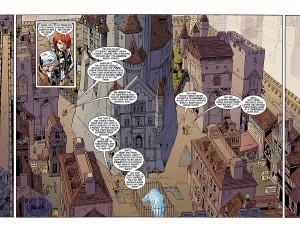
After the current “Camelot” arc ends, the next three issues will put all the pieces in play for the final 10-issue storyline
And that is how it turned from a bunch of unrelated short stories to one mega-story with a different artist drawing each different chapter. There were 31 chapters drawn by 23 different artists — just a huge undertaking that turned out, and I hate to pat myself on the back but from the artistic standpoint at least, splendidly.
I thought the story was pretty good too. [Laughs] I don’t want to talk too much about the players beyond Cinderella as I don’t want to spoil the story but can you talk a little about your leading lady?
I am certain that part of putting her front and center had to do with her being such a fun character. I did get to write her a little bit in “Fairest” but I didn’t really get to substantially write her the way many of our guest writers have like Chris Roberson has done with the “Cinderella” miniseries and Marc Andreyko is doing another one now for the next arc in “Fairest.” All of these writers whom I adore got to play with her much more than I have so in one sense, it’s to reclaim the character back long enough to say, “I get to write a big, important story with her, as well.”
In the other sense, the idea of “Fairest” is to contemplate mostly on the female characters because once you decide that all of the fairy tales exist in the same world or in my case, have been pushed together into the same world, the thing that happens so often in fairy tales, is the suggestion that one particular woman is the “fairest in all the land.” It’s sort of like when I grew up and I was the best artist in my school. But when I went to a bigger high school, I was suddenly just one of the dozens of “Well, I was the best in my school.” Suddenly, there is competition and I’m not the automatic belle of the ball anymore. I transferred that feeling into these characters. “I was the fairest in all the land but all of those lands have been taken over and now we’re stuck here together. Who really is the fairest?”
In part, this story revolves around that. Someone has made a list of all of the pretty Fables and intends to knock ‘em off one by one. You are almost restrained or even required if you are going to have a lot of girls dying to make the hero one of the fairest in all of the land so that leaves us Cinderella.
Just where the story was set time-wise, it was at a time where all of the regular detective types in “Fables” were not available. Bigby is currently dead, turned into a glass statue and then shattered. The last time we saw Grimble, the last of the security guards, he was turned into a little bluebird and Beast is off living in another land right now. Cinderella says she is a detective not a spy. They’re not the same thing but she’s the closest thing the Fables have right now so it becomes her job.
I like that only because in all of her previous stories, she was recognizably the best at what she did. There was no better than her. There was a cocky swagger, which I like in a character. This was putting her in water that she was not familiar with where she couldn’t be as cocky and I think her first statement about the entire story is: “You need a detective and I’m a lousy detective.” And then we’re off to the races from there.
And I love her acknowledgement right off the bat where she asks, and I’m paraphrasing, “Wait a second. Why aren’t I on the list of the fairest of them all?”
Right. She’s trying to figure out who has this list of all of the pretty girls they want to kill and how come she’s not on it.
I didn’t want to go to the party but I’m upset that I didn’t get invited to the party.
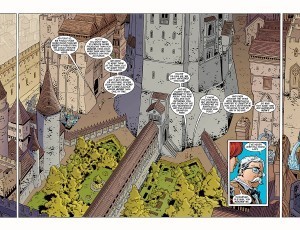
Just because the ongoing “Fables” is ending, Willingham didn’t rule out future projects set in the world
I have to tell you something. That encapsulates my attitude completely. There are all sorts of things which I have no desire to attend or participate with but I’m a little irked when I don’t make the list of invitees. I know that feeling well.
Another nice thing, which you’ve alluded to, is that this story is set right in step with what’s currently going on in “Fables,” which isn’t always the case with these side projects.
It is. We made it as self-contained as we could because we don’t want to make it a requirement that someone has read everything else before you get to this. Any given book should not require homework. We try to make it as accessible as possible. That said it does fit in pretty solidly with what’s going on right now. I think, and don’t hold me to this because I would have to check my chart, this falls right between the “Camelot” arc and the beginning of the big, final saga.
November 25, 2013
Fairest In All The Land Reviews
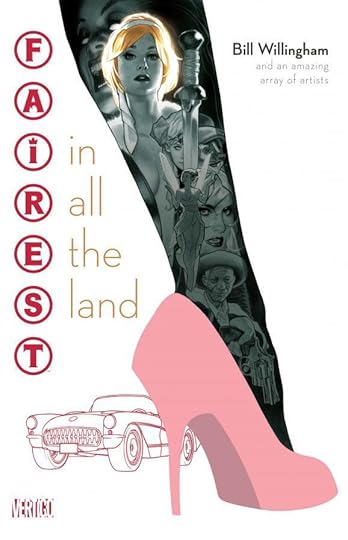 Reviews are coming in for the latest Original Graphic Novel from Bill Willingham, Mark Buckingham, Renae De Liz, Chris Sprouse, Fiona Meng (our Fablescon Portfolio Review winner), Adam Hughes, Phil Noto, Meghan Hetrick, Gene Ha, Karl Kerschl, Chrissie Zullo, Mark Chiarello and more.
Reviews are coming in for the latest Original Graphic Novel from Bill Willingham, Mark Buckingham, Renae De Liz, Chris Sprouse, Fiona Meng (our Fablescon Portfolio Review winner), Adam Hughes, Phil Noto, Meghan Hetrick, Gene Ha, Karl Kerschl, Chrissie Zullo, Mark Chiarello and more.
Here are a few snippits from those reviews:
“The roster of characters is impressively reimagined, from Goldilocks as an angry protest songwriter to Cinderella’s sidekick Reynard the Fox, and Bigby the drunk wolf (who memorably grumbles how “cross-species hanky-panky just isn’t for me”).”
-Publishers Weekly
“Willingham has created a vast world from which to draw on for the Fables franchise, but what’s perhaps the most entertaining part of the series (and its literal sister-title Fairest) is the blending of stories in an “everything exists at once” type way, without apology. Fables revels in the sheer magnitude of its characters and ways to tell a story.”
-Comicosity
“Fun, feisty and female-tastic, Fairest In All The Land is a great graphic novel that does something a little different with the fables we all know and love.”
-The Little Blog of Geek
“Fairest In All The Land is pretty accessible, the story can be understood and enjoyed with no previous knowledge of the Fairest/Fables world or events. There’s a bit more depth, especially in personal relationships, after reading the previous stories, though.”
-Norgy
November 20, 2013
Sunday Geekersation – An Interview With USA Today
Brian Truitt of USA Today interview Bill about Fables and other such stuff. You check out the review below or by clicking here to be taken to the USA Today web site.
————————————————-
All’s fair in love, war and Bill Willingham’s murder mysteries.
The comic-book writer and creator of Vertigo Comics’ iconic series Fables crafts a whodunit with his fairy-tale characters in the original graphic novel Fairest in All the Land, out Wednesday.
In the Fables world where legends from folklore and mythology such as Snow White, Prince Charming, the Big Bad Wolf (aka Bigby Wolf), Rapunzel and Beauty and the Beast live among the “mundane” humans in their own society, Cinderella is the best superspy of them all.
In Willingham’s new graphic novel, which features more than 20 different artists (including Adam Hughes, Phil Noto, Renae De Liz and Chris Sprouse) illustrating a series of connecting short stories, a killer is on the loose and murdering people, including the attractive women of Fabletown, and with no other detective around, Cinderella is called upon to solve the mystery.
There’s even a list of potential victims — the fairest of them all — though Cindy’s a little chafed that she’s not on it.
Because he’s a fan of them, Willingham made the new story a “fair play” murder mystery, in which the reader is given enough clues and a reasonable chance to figure it out at around the same time as the protagonist.
However, the writer says, a fair-play mystery is “really, really tough to do in a world in which magic works. You can’t get away with saying, ‘It’s just magic’ — you have to show how the magic’s working and you have to find some way without boring the pants off the readers.”
Willingham, who launches his steampunk/pulp hero Dynamite series Legenderry next year, talks with USA TODAY about Cinderella and other Fables characters’ roles, how he did as a mystery writer and if there’s a chance there’ll be more extra graphic novels before Fables ends with its 150th issue. (For those who want more Fables this week, issue 135 is out Wednesday as well as a $1 “Vertigo Essentals” edition of the first issue.)
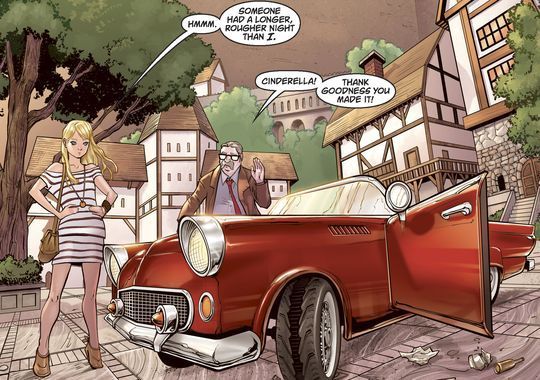
Q. You introduced Cinderella as a superspy a while back and she has had adventures in the Fables flagship comic and the Fairest spinoff as well as having multiple miniseries. In this graphic novel specifically, what did you want to show off about that character we haven’t seen yet?
A. The one thing we established early on with Cinderella the spy is that she’s good at it. Unlike the greatest superspy of the mundane world, who can train for two decades to do what she does, she’s been at this training and learning her craft for many lifetimes. So she’s great at it, and she knows it and she’s cocky and confident. And I love the cocky and confident Cinderella, but you can’t only have that. So of course the idea is to drop her in a situation where she’s not.
As she says a couple of times during this, “I’m a great spy but I’m a lousy detective.” Because of that, she’s not as sure of herself, she’s not cocky and she makes some rookie mistakes that any real detective wouldn’t have made.
If she has weaknesses, they’re laid bare here.
Q. You’ve populated the graphic novel with a large supporting cast. Who else was a favorite to write in this one?
A. I’m going to try not to sound trite, but even with a sprawling cast this size, provided we’ve done our job to make all the characters different and not just Xeroxes of each other, there are aspects of all of them that are a joy to write. Every character comes with a set of limitations and a different set of desires.
Part of the job here is to get inside that character’s fictional head and explore what makes him or her tick. In that sense, like with Boy Blue, I like writing a guy who’s dying and knows it. He’s been so nice and clean and polite all his life and has the freedom to get just a little bit cranky at the end.
I don’t think that works for any other Fables character in exactly the same way. Put Jack of Fables in the same deathbed and it would be a completely different story, with him raising all kinds of hell with lots of “Woe is me” and “How could this happen to someone as pretty as I am?” Or the stoic Bigby, who takes what life hands you. His deathbed scene would be boring – we’d just see him lying there for a while without a peep, maybe the occasional growl of “Get out of here” but that’s it. What a terribly boring story that would be.
Taking the challenges of each character as they come is the thing, and that’s where I get my enjoyment of them.
Q. Did this graphic novel start as simply a Fables story arc?
A. It was going to be various stories of some of the key crisis points in the lives of many of the female characters who were in fact the fairest in all the land — sort of like a Fairest version of (the graphic novel) 1001 Nights of Snowfall to tell different stories but tie them all together. In 1001 Nights, we used the Scheherazade theme to justify all those otherwise-unrelated short stories.
Here, we were going to do a similar thing where it was the Magic Mirror telling these stories and the combining element would be the true nature of beauty as opposed to what some of our ideas about that are, etc.
The good problem is that story got wider and bigger and more complex, and pretty soon it turned into the entire book. To do that story justice, I’d have to forget about any others, and it became this huge, sweeping extended murder mystery.
Q. Was it enjoyable to pace things out and leave clues — or toss in a red herring — for the readers and Cindy?
A. Oh yeah, it’s the fun thing about this. It’s also the most infuriating thing about it.
The book is done, it’s printed, and we can’t change it now. I know the next time I read through it again just to check and see if everything’s where it should be that I’m going to spot the one or two things that, oh, my god, I can’t believe I left that out.
Placing the clues and the misdirection is a wonderful fun thing to do but it’s also scary in the sense that I’m very much an imperfect human being and I’m certain someone’s going to point out, “Well, this couldn’t have happened because what you said in this panel …” My plan, of course, is, even in this social age, to whomever spots the first thing and points it out is to just have him quietly killed.
Q. Come on, comic fans would never point out anything like that.
A. (Laughs) Yeah, I know!
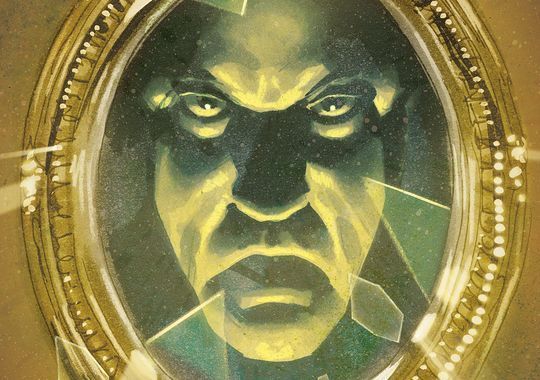 In “Fairest in All the Land,” The Magic Mirror of Snow White fame is a narrator of sorts.(Photo: DC/Vertigo Comics)
In “Fairest in All the Land,” The Magic Mirror of Snow White fame is a narrator of sorts.(Photo: DC/Vertigo Comics)Q. The Magic Mirror from Snow White fame is an interesting device used to tie everything together.
A. I like the chance to designate at least in my universe here what the Magic Mirror can and can’t do. And in the process of this, since he is still substantially telling a lot of this story, we got to do that, as well.
Structurally, the biggest challenge after the script was done was we had 23 different artists on this, but since you’re essentially telling parts of all the same story, keeping costumes and clothing the same from one segment to the next and all the continuity concerns were multiplied many, many times.
Most of the time (editor Shelly Bond) and her crew had to deal with that, but there was some stuff. This was not a case of when the script is finished, you just put it away now that the artist has it and you’re done. It took a lot of structural attention all the way through this.
Q. Having all those artists probably made at least one person pull their hair out on deadline. Why did you think having them was important to the story?
A. Because to do so presents many challenges. It’s very hard. In this business we’ve been at this for a while. Kicking up the level of difficulty was part of the attraction of doing this.
I like challenges of “Can I do this?” in the sense of the writing on this. My days of running races or doing heroic and athletic things are over. So one moves one’s life’s challenges into the more cerebral areas, which for me is undiscovered country.
Q: So, this is your extreme sports.
A. This is it!
Q. In crafting the actual whodunit of it all, did much change in terms of culprits and reveals?
A. The open secret of how to write murder mysteries is you start at the ending and you work backward. So, the ending didn’t change as that was the anchor point. I knew how it would finish up.
The mystery for me was how to walk that cat back to make sure that everything led to that properly. The middle parts and the beginning changed constantly, hopefully for the better as we went along.
Q. On a scale of zero to Agatha Christie, how did you do as a mystery writer?
A. (Laughs) Boy, I don’t think I’m anywhere near the Agatha Christie league. She was wonderful, but she did have that problem of introducing new evidence way near the end to make the ending work out right, which is considered kind of a cheat.
Q. Do you have a favorite type of mystery?
A. That’s a good question. The Ellery Queen mysteries are the most well-known traditional whodunit. The problem is the cleverness of the payoff often overshadowed the story itself, and so you had a lot of characters doing things that no human being would actually do just to make the mystery pay off.
In fair-play mysteries, there’s a subset called the impossible-crime mysteries, which is not only a mystery that we will give you the clues to solve as we go along but it’s a mystery that could not possibly have happened — the traditional one being the locked-room mystery — where the detective not only solves what happens but how such an impossible thing was able to occur. Those are probably my favorites because those are really, really hard to write. They’re probably the hardest thing to write of anything. When you pull it off, it’s great.
The old Banacek TV series was that and they fascinated me as a kid. They were not really difficult, hard-to-solve mysteries and were made for a good TV audience. I found myself figuring out about half of them, and that probably lit the desire in me to play in that particular sandbox.
That said, this is not one of those. I’m not sure I’m in the right league to attempt an impossible mystery.
Q. You’ve always done these graphic novels during the Fables series to add to your mythology. Will there be any more before you break fans’ hearts and wrap up the series with issue 150?
A. Well, it depends on who you talk to. We’ve got about 15 months before Fables wraps up, and Shelly, God bless her, intrepid editor that she is, I’m not sure she knows that Fables is ending even though I told her. She’s still in that denial stage because she keeps running these wonderful ideas for other graphic novels by me, and I’m going, “Do you know the book’s ending, Shelly?”
My suspicion is that she looks at the calendar and says, “Well, that just means we’ve got 15 months to get these other projects off the ground. It’s not officially over till it’s over.” While I admire that drive and pioneering spirit, like let’s go boldly across the plains until the Indians get us, at the same time I’m wondering.
The answer is a definite “Who knows?”
(Sunday Geekersation is a weekly series of Q&As featuring luminaries, mainstays and newcomers of geek culture discussing their projects, influences and pop culture.)
November 14, 2013
Since You Didn’t Ask…
Okay, since we have a little free time, let’s take on something vastly unimportant: the problem of sprawling Biblical epics, such as the forthcoming Noah film.
Why is the pre flood world of the Bible always depicted as technologically primitive? Nothing in Genesis says it’s so.
What Genesis does say is, the world was a magical place full of half-breed demigods, the offspring of angels and smoking hot human women. Did none of their pillow talk include how to do better than a mud hut?
Magic was in regular practice. Sorcerers abounded.
At some point all the animals talked. Did their speech gradually die out, once Adam and Eve were kicked out of the garden? Did their ability to speak die with the same Fall of Man that Adam and Eve suffered? Or were they chatting all along in the pre flood world, and only lost it during the trauma of the cataclysm itself?
What was the technological level, pre-destruction? Did they have flying cars and laser guns? Advanced medicine? Why not? All of that could have been destroyed in the big flood.
Not saying something existed isn’t the same as saying something didn’t exist.
Judging entirely by the just-released trailer, the new Crowe movie takes the same approach every other Bible film and story has done: the world before the flood was exactly the same as the world immediately following: sticks and skins and a few mud huts.
What a waste. You have a giant world-destroying flood. Who’s to say the destroyed world wasn’t the magical and technological marvel I posit above? That way, when the flood resets everything, starting us once again at sticks and stones, the loss is even more poignant.
Face it, kids. The Biblical flood is the first and best post apocalypse story. We just can’t seem to realize it because we’re living in the post apocalypse. What is at the heart of every post apocalypse story? Loss. We’ve lost so much that made us human and civilized. Now we’re back to savagery and have to start again.
It’s silly to think the worldwide flood did nothing worse than temporarily pause the steady pace of technological improvement. It was primitive pre flood, just as primitive post flood and only then did we started innovating? Bunk, I say! Bunk!
I’d like to see the story redone showing the wondrous world that existed before the cataclysm. The advance construction methods of the giant ship. The elite forces of animal gatherers, using their flying barges to get all the critters in place to board the arc. The crashing of all those flying craft once the rains start, because, “Shit! What the fuck is all this water from the sky, which has never ever happened before? The entire sky is broken!” And, not being constructed to account for a phenomena that’s never occurred before, all the flying things go down, down, down.
No, you don’t have to employ those specific ideas and questions, just start thinking a little more outside the arc.
Our world, pre flood, is a setting ripe with possibilities for a sprawling fantasy epic.
It’s going to really piss me off if I have to write this myself. I’m too busy.
November 13, 2013
Signing at Challenger’s Comics
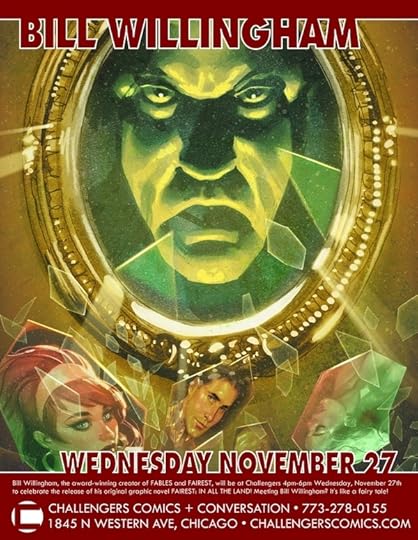 Bill will be doing a signing at Chicago’s Challengers Comics this month to celebrate the release of FAIREST IN ALL THE LAND (out on November 26, 2013).
Bill will be doing a signing at Chicago’s Challengers Comics this month to celebrate the release of FAIREST IN ALL THE LAND (out on November 26, 2013).
Bill will be signing at the shop on Wednesday, November 27, 2013 from 4-6pm, so please bring whatever you would like Bill to sign and drop by to say hi.
You can check out the event on Challengers’ Facebook page by clicking here or you can visit their web site and the official link to the event here.
We hope to see you there!

